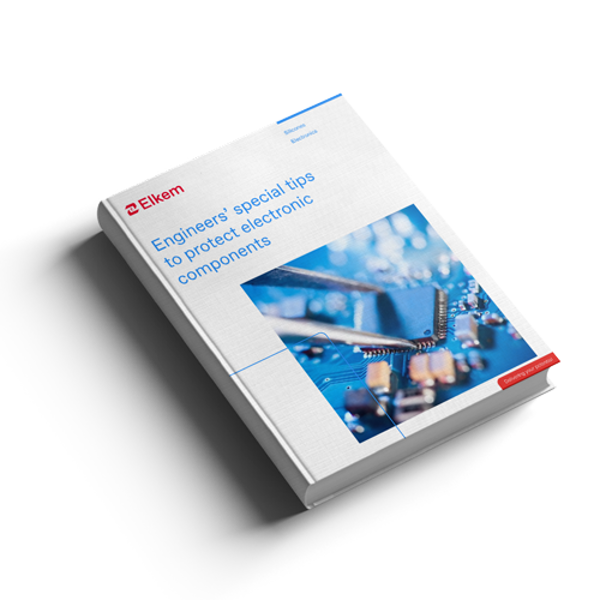- Digital Communications
- What is conformal coating?
What is conformal coating?
This article is primarily addressed to designers and manufacturing engineers in all industries who are involved in making and protecting critical electrical and electronic components in their products and processes, as well as technicians in charge of maintaining and repairing parts for customers. It examines current and future conformal coating technologies that enable innovative solutions to improve performance and ensure safety and security for a great diversity of applications and markets.
This study also provides key information for non-specialist decision makers, including Executive Managers, Industrial and Procurement Managers, as well as Financial Officers or Marketing and Salespeople, to enable them to understand how conformal coating technology works and why it can contribute to their competitiveness.
In this blog, we look at conformal coating, while other related blogs will examine encapsulation & potting of electronics parts and, subsequently, thermal management. This series strives to give our readers the fullest overview of available and emerging technologies to protect their electronic products efficiently.
It is more important than ever to protect electronic parts because they have shifted from being peripheral components in our lives to become the very core of our computing and communication devices and a leading source of energy production and management. Properly protecting electronics also ensures longer life cycles for products and greater repairability, contributing to better total cost of ownership and sustainability.
What is conformal coating?
Conformal coating, as its names suggests, is a thin protective layer or film of protection (generally between 25-250 microns) that conforms to the shape of parts, in particular irregular surfaces such as Printed Circuit Boards (PCBs). It can be made from different resins or polymers, including silicones, to eliminate different hazards that could damage or destroy delicate electronics. These include moisture (humidity, dampness, water contact), organic growth (e.g. fungi or mold), dust, chemical or other contaminants (including solvents), oxides and many other aggressive or environmental hazards. Conformal coating also serves as an electrical insulator, which strengthens dielectric resistance, a thermal barrier that can withstand a wide range of temperatures and serves as a mechanical stabilizer (enabling parts to resist vibrations and shocks).
Conformal coatings, depending on the critical performance characteristics and product life features to be protected, must be carefully selected, formulated and applied, not only to protect the initial product, but also to be easily maintained and, when necessary, to enable components to be repaired, avoiding the replacement of the entire part.
What are the different materials that can be used for conformal coating?
Essentially, there are five major types of materials used for conformal coating, each with its specific features:
- Acrylic Resins (AR) – provide good basic protection against moisture, but practically no resistance to solvents. They are quite elastic and provide good dielectric insulation, are easy to apply and are relatively inexpensive but are not very resistant to extreme conditions and aggressive substances. Their main feature is that they can be easily dissolved in specific areas that need to be repaired.
- Epoxy resins (ER) – these more traditional two-part compounds provide very high levels of protection against moisture and abrasives (being quite hard), as well as chemicals. They are used mainly for potting rather than conformal coating since they enable very robust protection, but they are difficult to remove wholly or partially, and are therefore not very accessible for repairing components.
- Silicone Resins (SR) – distinguish themselves, above all, from other coatings because of their huge temperature resistance range, (-60°C to 200°C and as high as 600°C in special formulations). This is far higher than most urethanes, making them ideal for use in energy and transport applications, such as engine housings. They also offer high chemical resistance. Silicone coatings can be transparent and offer excellent and durable protection against high humidity and can therefore be used for protecting outdoor LED lighting. Because of their rubbery texture, they offer good resistance to vibrations, but less against abrasion. From a processing point of view, they are easy to apply (mainly in ultra-precise manual or automated spraying), cure easily and quickly at room temperature and can be dissolved with solvents when necessary for reworking or repairing specific components.
- Urethane (or Polyurethane) Resins (UR) – are easily applied and provide good moisture and fuel vapor resistance and better chemical resistance than acrylics but require longer curing times. They are relatively difficult to dissolve for reworking or repairing because their chemical resistance requires very strong solvents, often detrimental to the underlying components to be accessed.
- UV Curing (UVC) – offers high chemical resistance and mechanically robust conformal coating features but are difficult to rework or repair precisely because of their toughness. They are, however, widely used in high-speed mass manufacturing because of their rapid curing time, ease of application, non-toxic composition and thermal resistance.
Performance summary of different conformal coating materials:
|
Material |
Humidity Protection |
Chemical & extreme Protection |
Ease of processing |
Curing time |
Dielectric protection |
Thermal protection |
Repairability |
|
Acrylic |
+ | -- | ++ | ++ | ++ | + | +++ |
|
Epoxy |
++ | +++ | - | -- | ++ | + | -- |
|
Silicone |
+++ | ++ | +++ | +++ | ++ | +++ | ++ |
|
Urethane |
+++ | + | +++ | - | ++ | --- | |
|
UV Curing |
++ | +++ | ++ | +++ | +++ | --- |
What are the main applications of conformal coatings and in which industries are they most widely used?
Conformal coatings, because they are very thin, take up very little space and are lightweight, were for a long time used mainly for aerospace, military applications and industrial electronics, such as mainframe server systems. Today, with the need to miniaturize electronic computing and communication devices and to electrically power automotive and transport vehicles, they are present in huge quantities and in a variety of everyday applications. They are gradually replacing potting and encapsulation in critical electrical and mechanical applications, reducing the amount of materials used, the space required and the weight of products.
Also, because electronic devices, such as new generation 5G smartphones produce more heat, coatings are required to provide excellent thermal resistance, as well as being more waterproof and corrosion resistant. In this regard, silicone-based conformal coatings can ensure longer product life and consistently better performance in demanding environments. The low modulus of silicone is a key advantage over other conformal coatings because they can adjust simultaneously to the varying coefficients of thermal expansion (CTE) of different parts.
While conformal coatings may be sufficient in most applications, they can also be used as a second line of defense inside encapsulated or protected housings made of different resins or silicone in extremely harsh environments. Therefore, it is essential to clearly specify and test parts with conformal coating specialists to determine if they cover the full spectrum of protection needs.
Are silicone-based conformal coatings safe and sustainable?
To meet environmental and health concerns, silicones use less solvents, which have also been modified to radically decrease their content of VOCs (Volatile Organic Compounds). In some new and innovative formulations, certain spray silicones have become completely solvent-free and cure in a very short time, without sacrificing any of their low modulus. This ongoing research is being done with manufacturing and process specialists in many industries.
Silicone-based conformal coating formulations are in conformity with the highest standards, including UL-746E (limited PCBs), UL-94 (low flammability), IPC CC-830 (performance quality). They are subjected to strict tests to ensure long product life, consistent throughput and heat protection and, increasingly repairability and recyclability.

